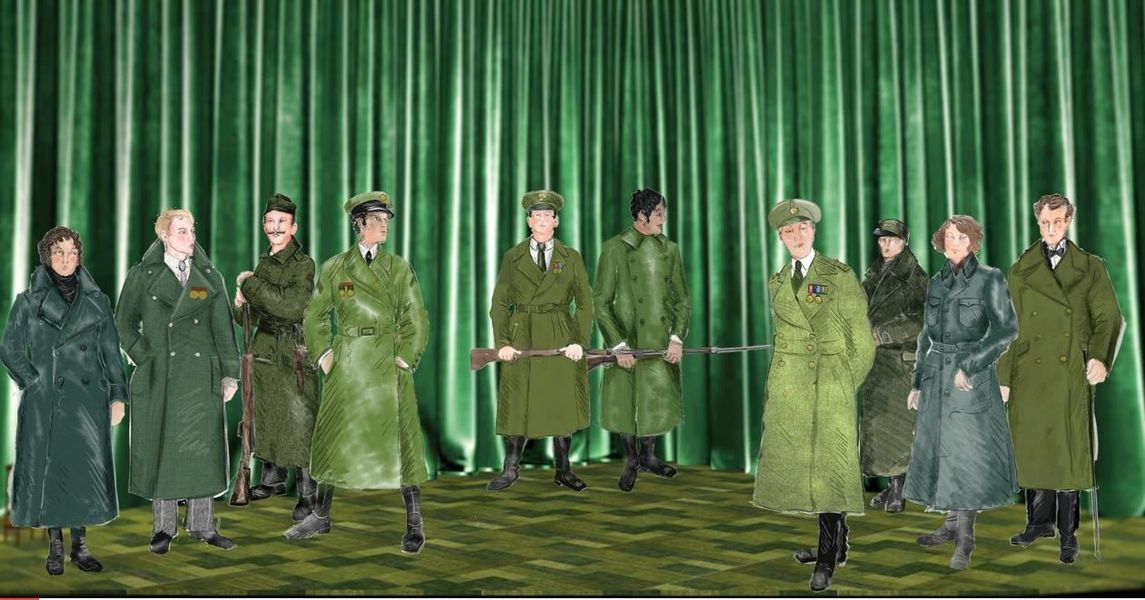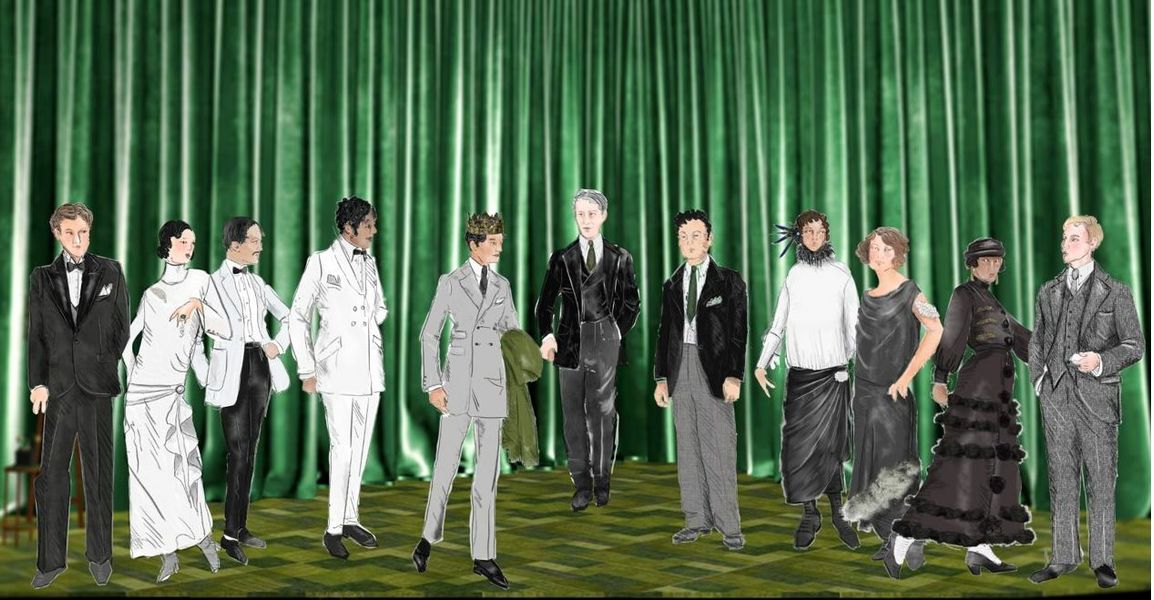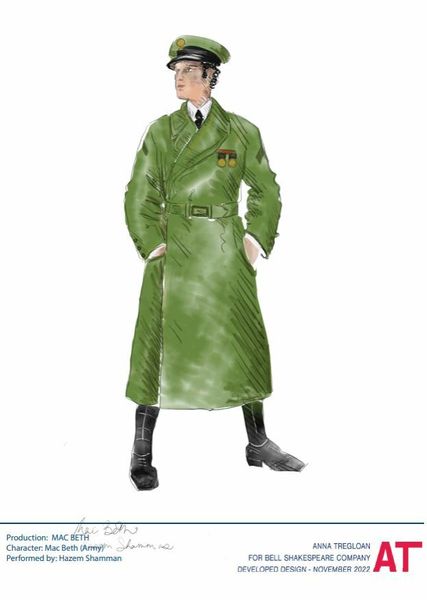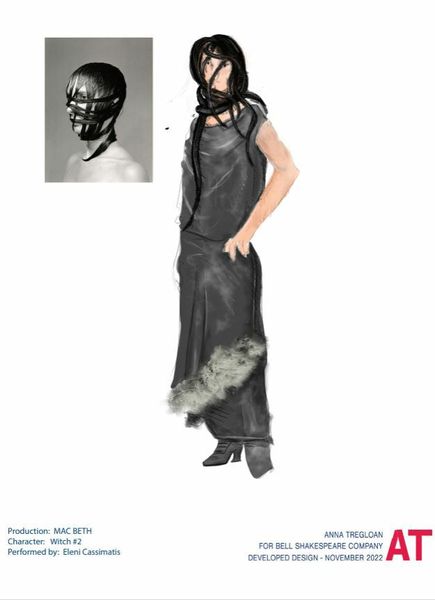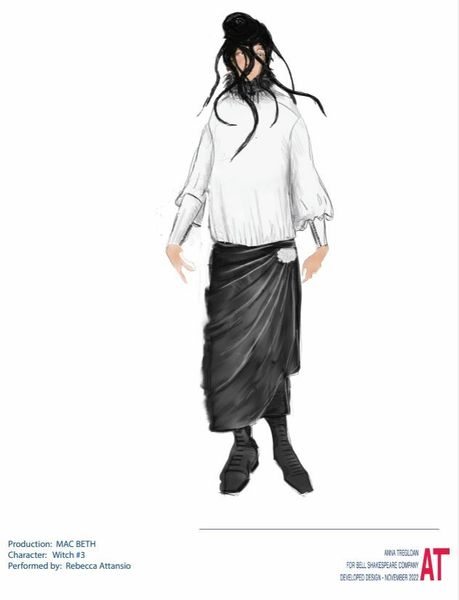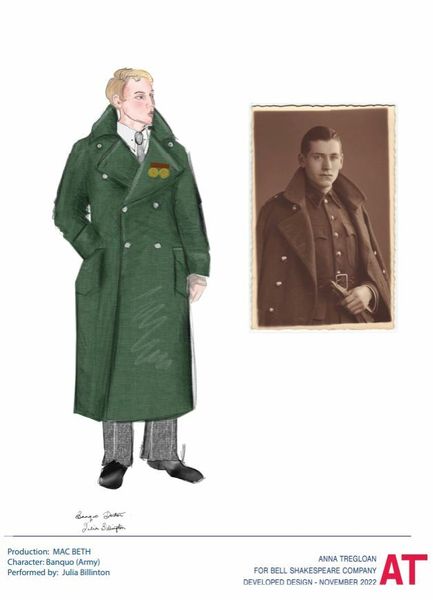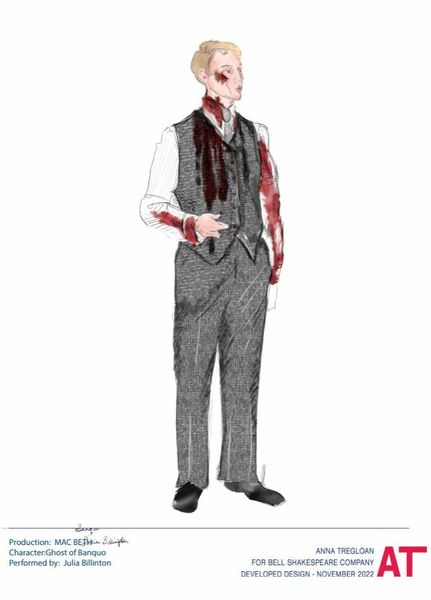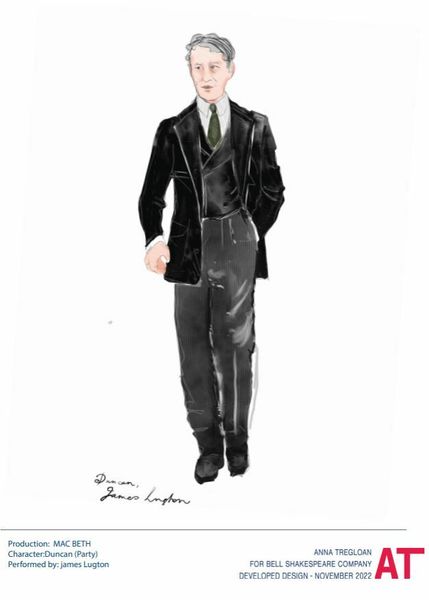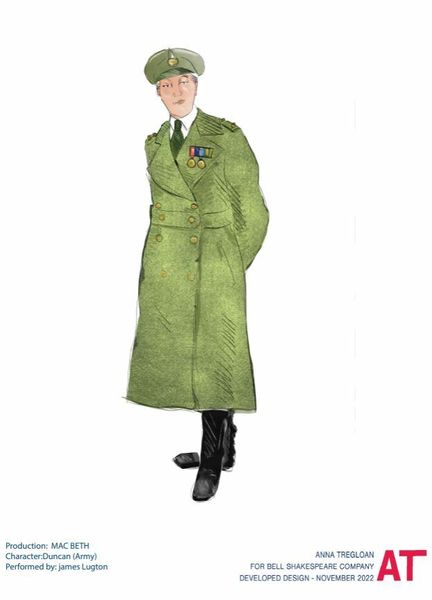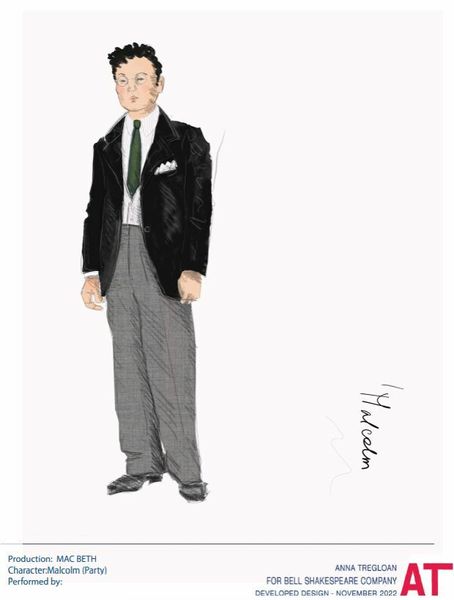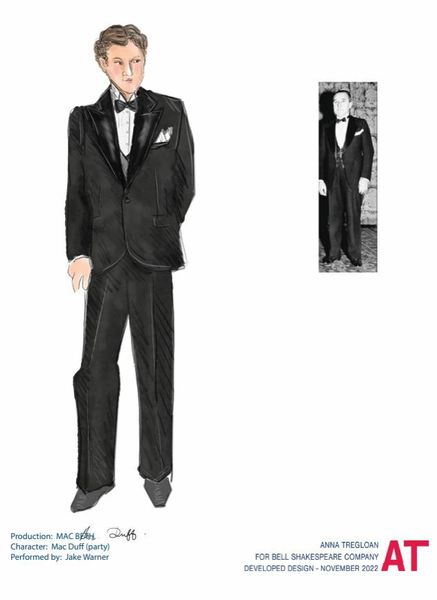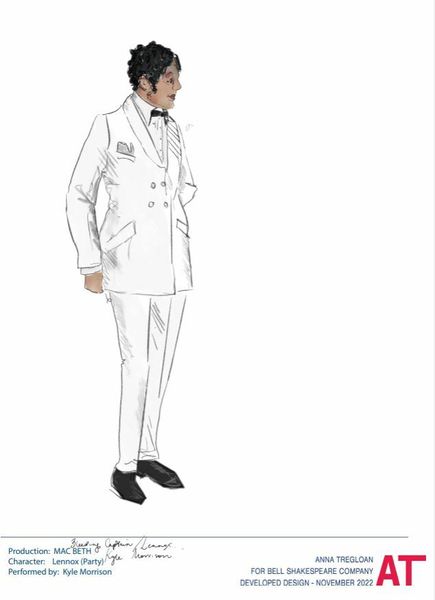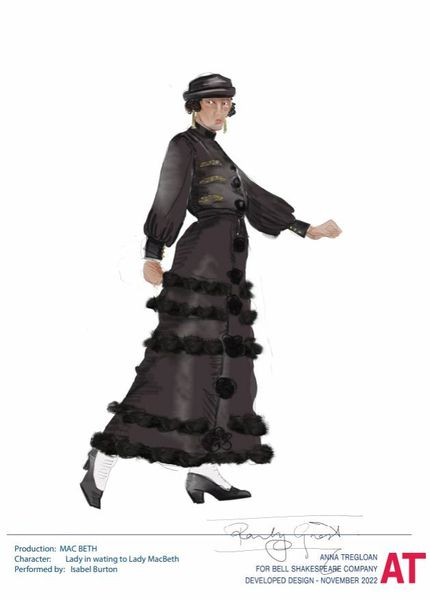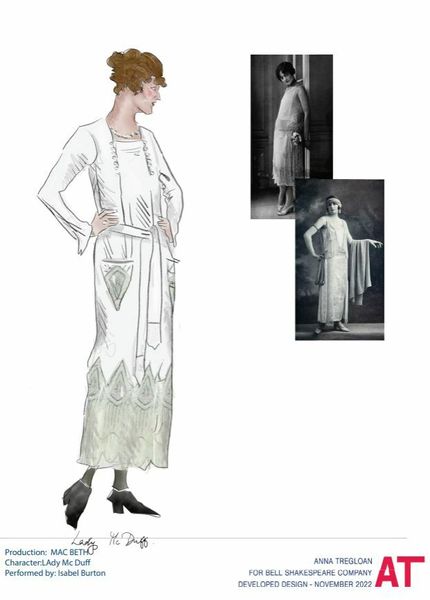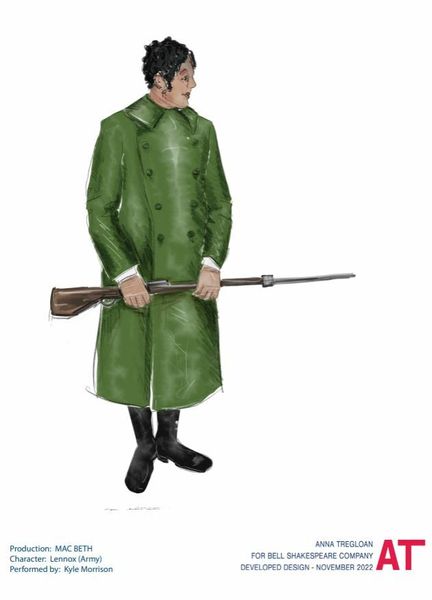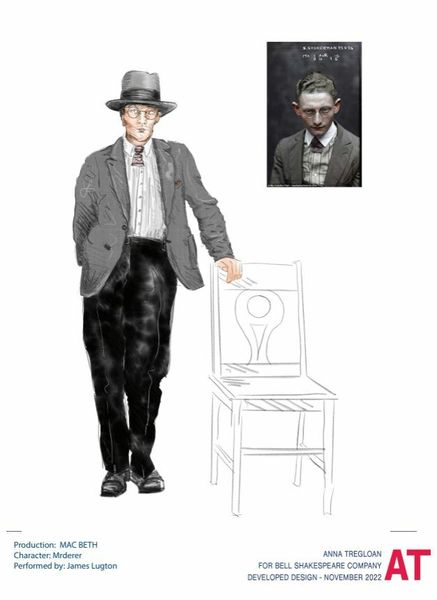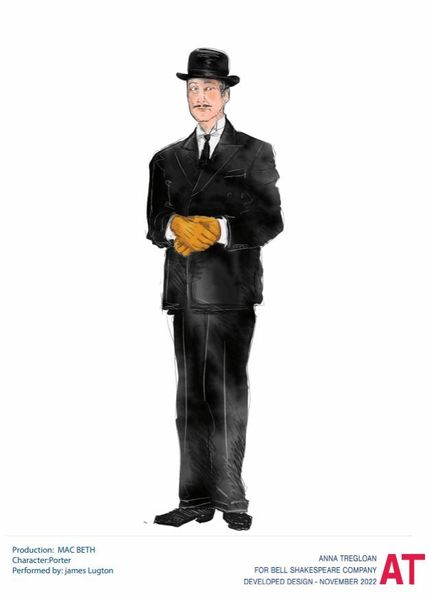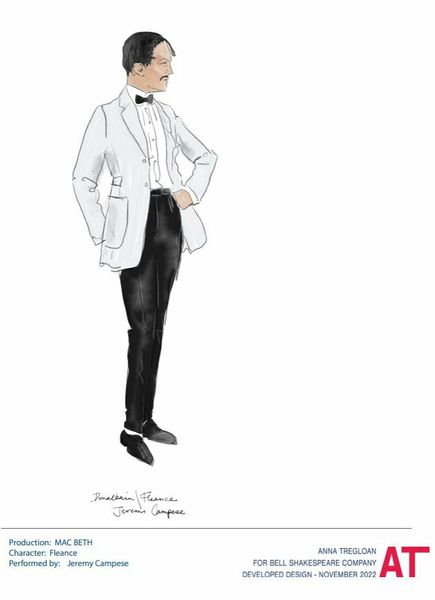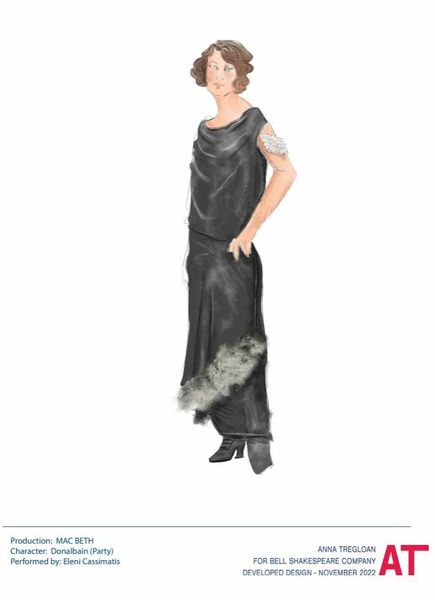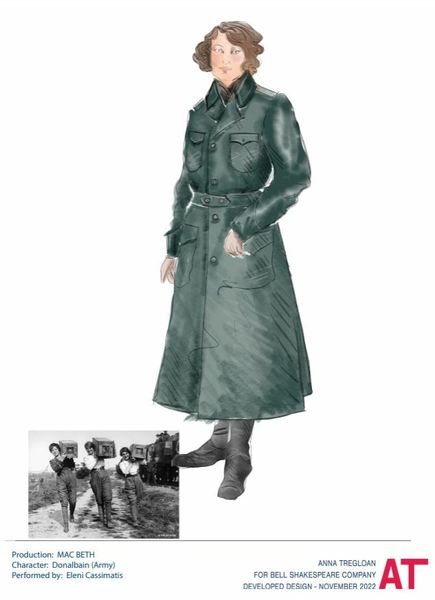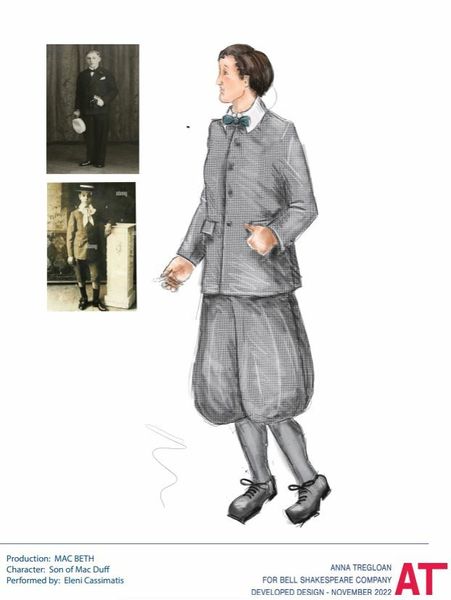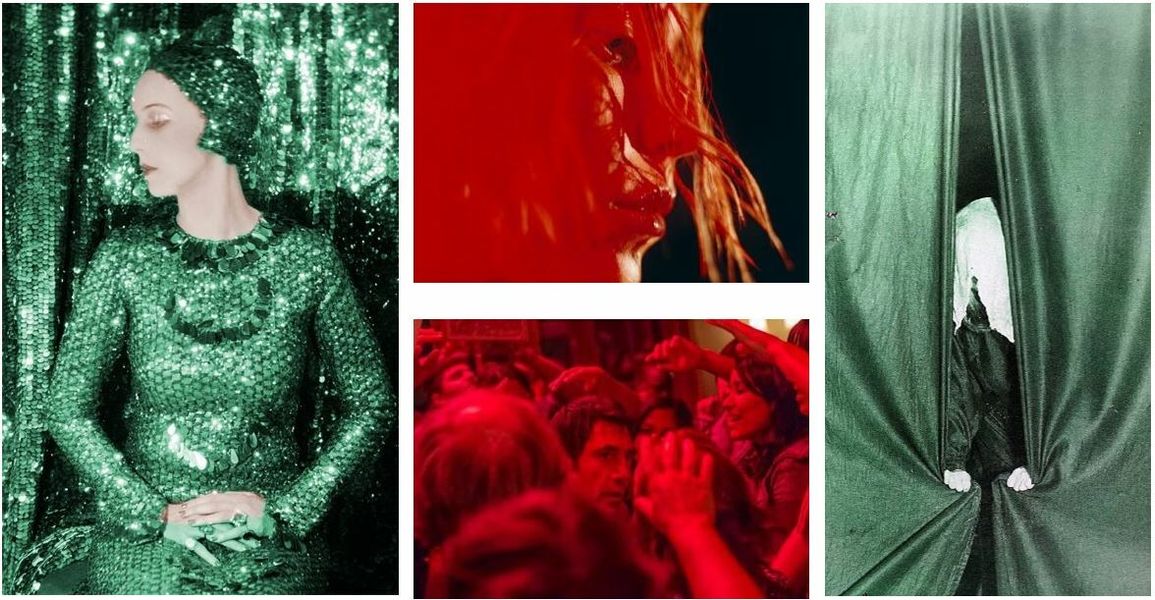


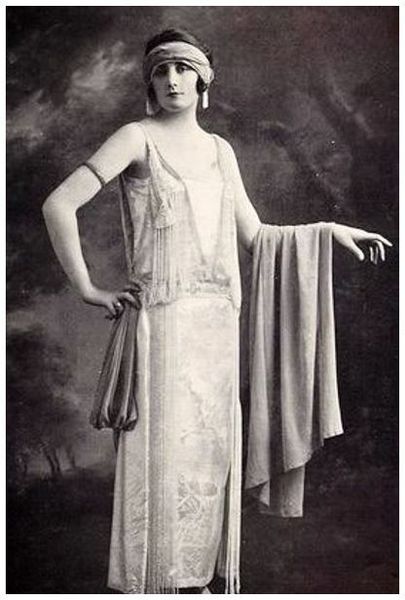
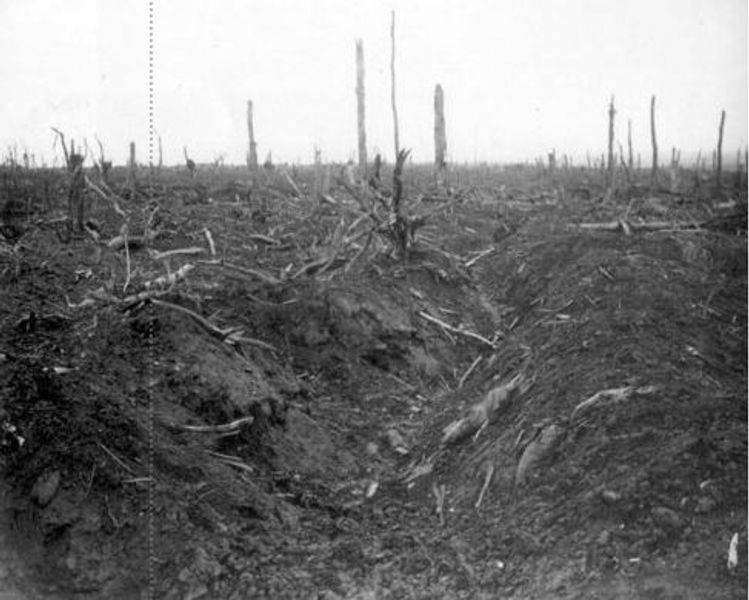
Macbeth
Take a look at director Peter Evans' directorial vision, and Anna Tregloan's set and costume designs for the 2023 production of Macbeth.
Director Peter Evans, in conjunction with set and costume designer Anna Tregloan, has set the production in the postwar period of the 1920s. Just as Macbeth commences in the direct aftermath of battle, the early 1920s were a time in which society was emerging from World War I, and returning to some semblance of normalcy. The ravages of war were still being seen and felt, but Western society was also stepping into the glamour of the ‘Roaring Twenties’. It was a world that had changed, and could never return to what it once was.
The 1920s was also a time that saw a revival of spiritualism. After the war, with so much human loss endured, it was popular for people to look for means of contacting loved ones in the afterlife. Parlour séances became popular, in which people at a dinner party would join hands and try to contact the dead.
A central motif in Bell Shakespeare’s current production is one of people sitting in a circle, joining hands, evoking an image of a 1920s parlour séance, set within an ongoing cocktail banquet. Ten actors and ten chairs create this moment of connection, where the past, present and future all seem to occur at once, and the border between living and dead becomes porous.
The play, of course, needs to encompass both the military world and the inner world of the castle, once the Scottish army has returned from battle. Characters must transition from the battlefield to dinner party guests. The cast of 10 actors rarely leave the stage, changing from guests at banquets to bodies in a battlefield through swift transitions of movement and costuming.
The dominant colour on stage is green (as discussed in set design below). The colour red also features heavily in the production, significantly through lighting (by lighting designer Damien Cooper). Evans and Tregloan were inspired by the idea of a recurring nightmare, a central theme of Macbeth, and the concept of loneliness in crowds. In the production we see lighting transport us between sleeping and waking nightmares.
Composer and sound designer Max Lyandvert creates an aural landscape that traipses between atmospheric underscoring of scenes, moments of stark silence, and hymns. Gregorio Allegri’s Miserere Mei, a setting of Psalm 51, is a recurring musical feature.





Anna Tregloan’s set design involves layers of green textures and details. A green, velvet curtain forms the backdrop of the set, allowing for swift entrances and exits. Tiled green patchwork carpet is evocative of the Scottish heaths and countryside. Green squares and shapes are reminiscent of the view of country fields from the sky. The green is also a nod to Birnam Wood, part of one of the final prophecies foretelling Macbeth’s doom.
Ten wooden chairs with green upholstery are used throughout – as furniture in Macbeth’s castle in civilised society, before becoming strewn in chaotic forms during scenes of battle and unrest.
The playing space itself is deliberately small – at times claustrophobic. A large cast must inhabit this space, rarely leaving the stage.


Costume design is directly inspired by the 1920s time period, referencing both military uniform and high-society fashion, as suits the high-status characters. The military world is depicted with a green colour palette, while scenes inside the castle see characters in a monochromatic palette of black, white and grey, against the green set. As a point of distinction, Lady Macbeth is clothed in all-white or silver.
Designer Anna Tregloan has created multiple costume designs for the characters, in order for them to be depicted in the various stages of the play’s narrative. Macbeth, for example, must first be seen in military dress returning from battle, then at home in his castle hosting the Scottish lords, and later, as King of Scotland. Most characters have an ‘Army’ costume and a ‘Party’ costume, allowing them to step between both worlds. Overcoats are used to cover party costumes and enable quick transitions. Grey coats in a pile build an image of bodies in wartime, ready to be looted for valuables by the Weird Sisters.
The Weird Sisters, or witches, are costumed consistently with the time period, with otherworldy elements. Black feathers and hair are added to signify their ‘otherness’, and they are played by three young women.

